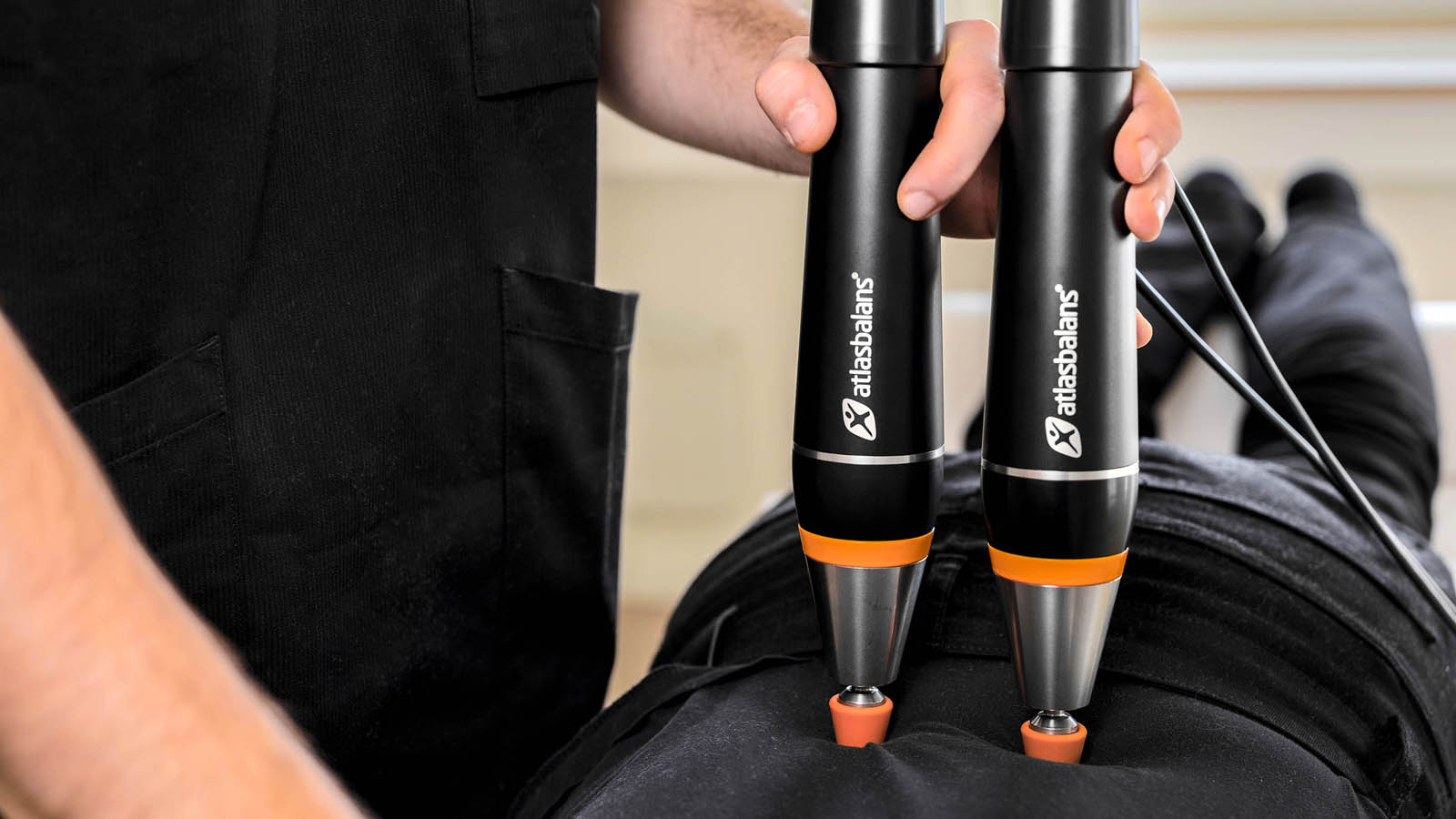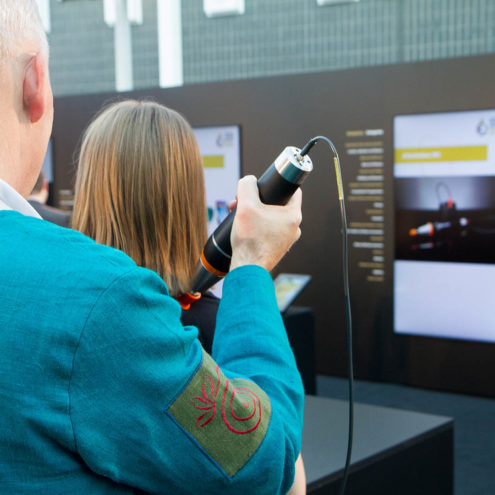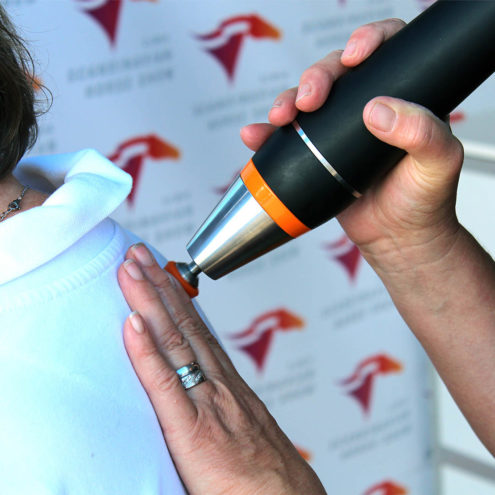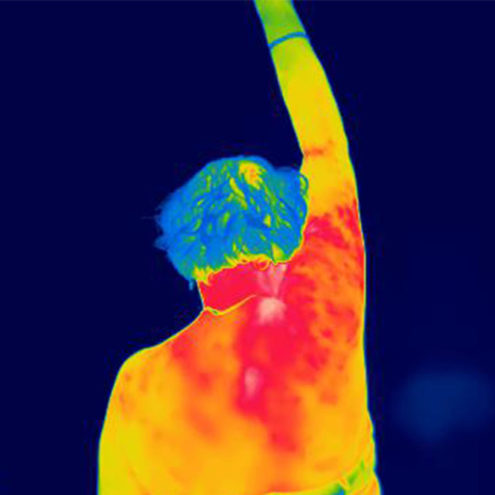False sciatica

The sciatic nerve is a collection of nerve fibres that originate from the last lumbar and first transverse vertebrae (L4, L5, S1-S3). Together they form a thick, powerful nerve, the longest nerve in the body, which extends down through the gluteal muscles and on down the leg to the foot. If the nerve is pinched, it can cause pain that radiates down the gluteal muscle, the buttock, and further down the back of the leg. Sciatica pain is divided into ‘true’ and ‘false’ sciatica. False sciatica, unlike true sciatica, is not caused by nerve compression or irritation from structures at the vertebrae, such as a herniated disc. Instead, it is a pressure and irritation of the nerve due to tension in soft tissues such as muscles and fascia further down its course, most commonly in the gluteal muscles.
What is false sciatica?
False sciatica is pain from the sciatic nerve caused by high pressure on the nerve from soft tissues as the nerve passes along its course from the lumbar spine down the leg. The nerve passes alongside and sometimes through powerful gluteal muscles, such as the gluteus and piriformis. These are powerful hip extensors that often become tense and overworked due to short, inelastic hip flexor muscles. When the hip flexors don’t give way, the hip extensors become overworked. This can mean that the sciatic nerve is subjected to higher pressure and becomes crowded where it passes. Blood vessels around the nerve are also affected, resulting in a lack of oxygen. The nerve can also be irritated via other soft tissues along the leg, but the most common case of false sciatica is that the gluteal muscles are involved, especially the piriformis.
Why do you get false sciatica?
It is common for us today to have short, inelastic hip flexors, due to our lifestyle with a lot of sedentary work, office work, driving, etc. Even riders, for example, easily develop short, strong hip flexors. The shortened hip flexor muscles have difficulty giving way when the hip is stretched, which means that the gluteal muscles with their fascia have to work harder. The piriformis muscle in particular is a common cause of false sciatica as the sciatic nerve passes right next to and in some people, right through the muscle. It is a small, narrow muscle that extends from the sacrum to the femoral head at the hip joint. It easily becomes very tight when the hip flexors tighten and when it becomes tight and spasms, like the fascia around it, it presses on the sciatic nerve, which is also surrounded by fascia, and the nerve becomes irritated and signals pain.
An unbalanced posture can lead to incorrect loading, which can increase pressure on the sciatic nerve on one side. It can also be triggered by bad, blunt shoes with poor shock absorption, or some other form of misalignment such as an oblique unbalanced pelvis.
What are the symptoms of false sciatica?
Symptoms of false sciatica are pain from the sciatic nerve, often starting in the buttock and radiating down the leg and to the knee but it can also be pain in the lumbar spine and around the sacrum. The pain can be very severe and even unbearable. It makes movement difficult and walking may become difficult. Read more about sciatica.
What can false sciatica actually be?
Sciatica pain comes from an irritation of the sciatic nerve somewhere along its course. If the cause comes from an unbalanced vertebral column, which can cause pressure from vertebrae or a bulging disk on the nerve roots where they exit between the vertebral bodies, you have true sciatica. In false sciatica, the cause is not from vertebrae or disks but pressure on the nerve further down, from tense, cramping muscles and fascia. It can be difficult to know whether it is a true or false sciatica. True sciatica can cause nerve damage all the way down to the foot with difficulty standing on the toe or heel and also nerve damage with numbness and tingling along the stretch of the nerve. In addition, there is often severe pain in the lower back. A false sciatica is not caused by nerve impingement from the spine but the irritation of the nerve is provoked by soft tissues, often from the seat and pelvic region. A false sciatica can also be caused by problems with a hip, such as osteoarthritis. Anything that causes an imbalance in the pelvic region affects the sciatic nerve and can cause irritation.
Does a fascia treatment help with false sciatica?
Fascia treatment always starts with an analysis of posture and balance, and balancing the pelvis is always the first priority. Relieving the fascia in the lower back and pelvis reduces the pressure on the nerve, making the pain go away. If the problem has been going on for a long time, the pain receptors have become oversensitive and it may take longer to get rid of the pain. Getting good flow throughout the fascia increases the gliding ability between structures, including the nerves, which also reduces pain. Fascia treatment at a Fascia Clinic is usually very effective against a false sciatica.
False sciatica – frequently asked questions and answers
What is false sciatica?
An irritation of the sciatic nerve that does not come from the structures of the spine, such as vertebrae or disks.
How do you get rid of false sciatica?
Effectively through fasciotherapy at a FasciaClinic. In addition, stretching exercises of short hip flexors.
Why do you get false sciatica?
Unbalanced posture resulting in incorrect loading and overloading of, for example, the hip extensors of the gluteal muscles. Working too unilaterally with short hip flexors overloads the hip extensors.
 Search
Search
































